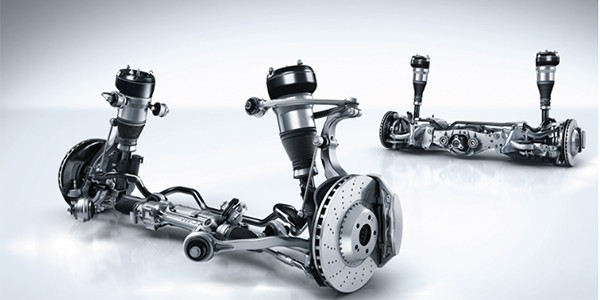
Advantages and Disadvantages of Using an Air Suspension System
The
initial goal of air suspension was to reduce weight while maintaining a compact
design. Air suspension systems were also employed to provide self-levelling
suspension in other aeroplanes and several big trucks at the time. As a result,
a vehicle's axle height would be independent of the weight of the vehicle's
load.
Finally,
for drivers who rely on larger trucks and vehicles to transport hefty cargo,
the air suspension system has numerous advantages and disadvantages.
A
faulty air suspension in a vehicle can also lead to a MOT failure therefore, we
recommend you check your MOT due date and have your air suspension
repaired beforehand.
What Is an Air Suspension System and How Does It Work?
An
air suspension system is a form of vehicle suspension that uses an
electric pump or compressor to push air through flexible bellows constructed of
a textile-reinforced rubber. Air suspension, according to Pro Car Mechanics, is
a polyurethane and rubber airbag system that replaces the leaf suspension or
coil spring system. To make the bags function like springs, a compressor
inflates them to a predetermined pressure. The use of pressured air rather than
pressurised liquid distinguishes air suspension from hydropneumatics suspension.
What is an Air Suspension System's Purpose?
Air
suspension is often employed to produce a smooth and consistent driving
experience however, sports suspensions may also include an air suspension
system. In larger drive systems, such as trucks, tractor-trailers, passenger
buses, and even passenger trains, air-suspension replaces traditional steel
spring suspension.
The
following are advantages of an air suspension system:
1. The reduction in noise,
harshness, and vibration on the road, which can cause driver discomfort and
tiredness, has resulted in increased driver comfort.
2. Due to the reduced
harshness and vibration of heavy-duty driving, the suspension system will last
longer.
3. Because the system
components do not absorb as much vibration, air suspension last longer.
4. When the vehicle is empty,
air suspension decreases the tendency of short wheelbase vehicles to bounce
over rougher roads and terrain. When the vehicle is loaded, air suspension
increases the ride height based on the load weight and speed.
5. Because air suspension is
better matched to the road surface, higher corner speeds are possible.
By
giving a greater grip and levelling the entire suspension, air suspension
improves the transport capacities of vehicles. The feel of an air suspension
system may also be modified, allowing drivers to select between a softer ride
for interstate cruising and a firmer ride for better handling on more
challenging routes.
Air
suspension provides more uniformity and keeps all wheels even when lifting
large loads. The air suspension system helps to keep vehicles level from side
to side, which is especially important when the load is difficult to level.
When turning bends and curves, this results in less body roll.
The
following are disadvantages of an air suspension system:
1. The initial expenses of
buying and maintaining an air suspension system – air suspension may sometimes
cost three times as much in repairs over ten years as a leaf suspension system.
2. Fuel costs for operating
compressors and periodically pushing air to the proper pressure
3. The larger weight of air
suspension compared to leaf suspension might reduce fuel economy.
4. The susceptibility of an
air suspension system to air leakage might lead to faults.
Some
of the disadvantages of air suspension systems originate from the mechanical
challenges that they might encounter.
The
following are some of the most typical problems with air suspension systems
that may require repair:
1. Internal rust or moisture
damage might cause the air struts or bags to malfunction.
2. The air suspension tubing
that connects the air struts or bags to the air system has failed.
3. Failure of an air fitting
due to improper installation or infrequent usage
4. Due to air leaks in the
springs or air struts from the compressor continually engaging to maintain the
required air pressure, the compressor burns out.
Even
with these regular mechanical issues, the advantages often exceed the
disadvantages.
The Final Word
Spring-ride
suspension is not better than air-ride suspension. Air-ride suspensions are not
only more expensive to buy and maintain, which might result in increased costs
for the vehicle owner, but they also do not guarantee greater ride quality.